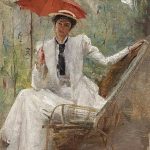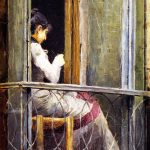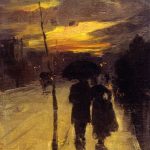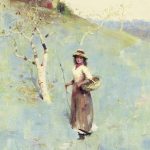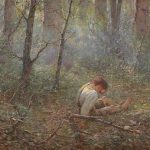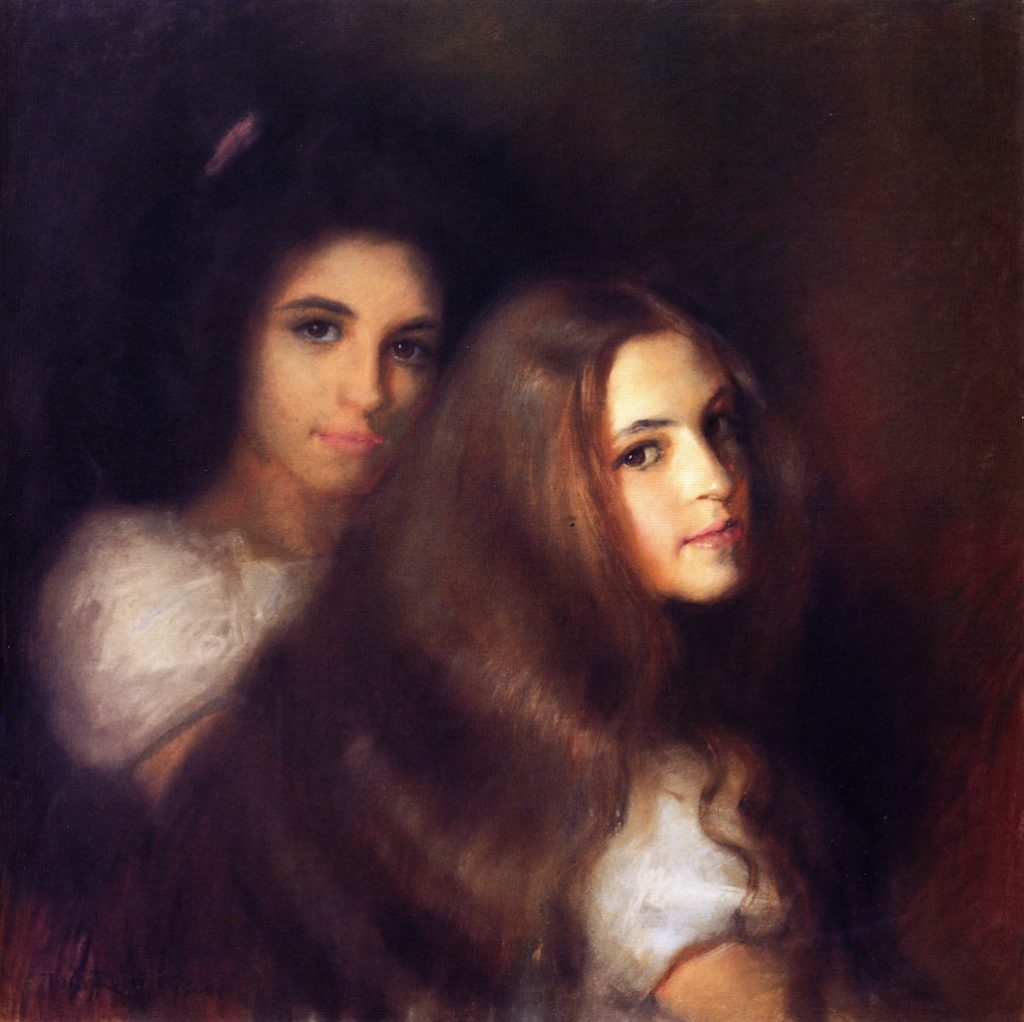

ELIZABETH AND CARMEN PINSCHOF
Tom Roberts (8 March 1856 – 14 September 1931)
Australian/English
c. 1900
Tom Roberts was born in Dorchester, Dorset, England, although some mystery surrounds his actual birthdate: his birth certificate says 8 March 1856, whereas his tombstone is inscribed 9 March.
Roberts migrated with his family to Australia in 1869 to live with relatives. Settling in Collingwood, a suburb of Melbourne, Victoria. He worked as a photographer’s assistant through the 1870s. During that time, he studied art at night under Louis Buvelot and befriending others who were to become prominent artists. One of these was Frederick McCubbin.
During this period, his mother had remarried to a man whom Roberts did not get along with. He decided to further his art studies, and returned to England for three years of full-time art study. This occured at the Royal Academy Schools from 1881 to 1884.
He traveled in Spain in 1883 with Australian artist John Russell. There he met Spanish artists Laureano Barrau and Ramon Casas. They introduced him to the principles of Impressionism and plein air painting.
While in London and Paris, he took in the progressing influence of painters Jules Bastien-Lepage and James Abbott McNeill Whistler.
Back to Victoria
Through the 1880s and 1890s Roberts worked in Victoria, in his studio at the famous studio complex of Grosvenor Chambers at 9 Collins Street, Melbourne. In 1885 he started painting and sketching excursions to outer suburbs, creating camps at Box Hill and Heidelberg, where he worked alongside McCubbin, Arthur Streeton and Charles Conder, working on representing Australia’s light, heat, space and distance.
In 1896 he married 36-year-old Elizabeth (Lillie) Williamson and they had a son, Caleb. Many of his most famous paintings come from this period. Roberts was an expert maker of picture frames. During the period 1903–1914, when he painted relatively little, much of his income came from this work.
Roberts spent World War I in England assisting at a hospital. In Australia, he built a house at Kallista, near Melbourne. Elizabeth died in January 1928, and Roberts remarried, to Jean Boyes, in August 1928.
He died in 1931 of cancer in Kallista near Melbourne. His ashes are buried in the churchyard at Illawarra near Longford, Tasmania. Source: Wikipedia.


